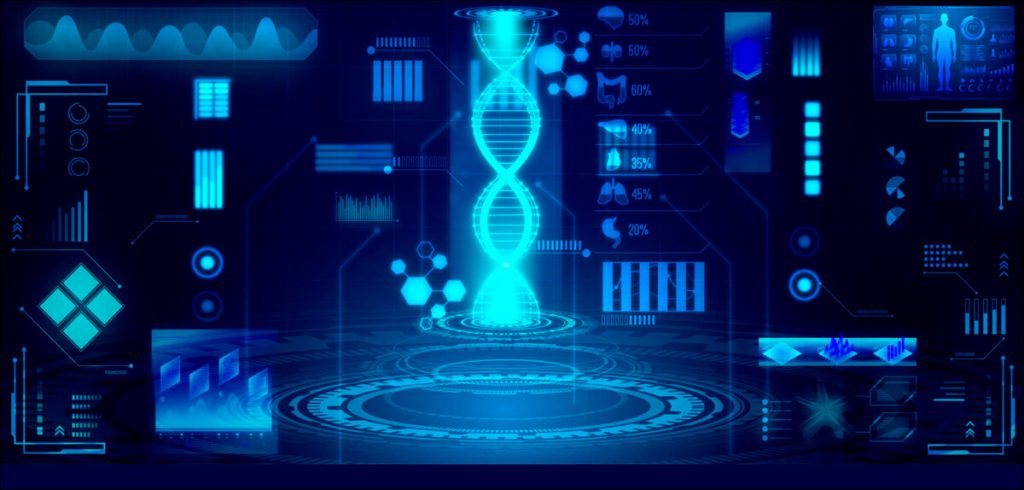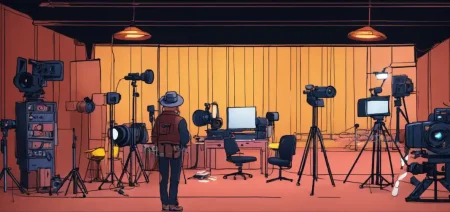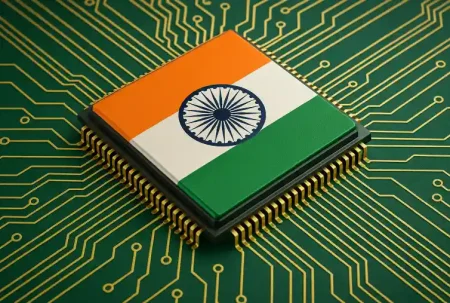A recent demonstration from scientists in China that DNA-based computing could program a single array to implement more than 100 billion distinct circuits puts the spotlight on the exciting field of DNA-based computing writes Satyen K. Bordoloi.
Liu Cixin’s seminal novel ‘The Three Body Problem’ shows a way to turn humans into a computer. Three persons are labelled ‘Input 1’, ‘Input 2’, and ‘Output’. Each has a white flag and a black flag corresponding to ‘1’ and ‘0’. Based on the colour of the flag each of the Input person holds up, the Output will hold a different flag. With just these three soldiers he shows how the different ‘gates’ of computing like ‘and’ ‘or’, ‘not’, ‘x-or’ etc. can be created. E.g., if the person’s Input 1 and Input 2 hold white flags i.e. ‘1’, the result will be ‘1’ or a white flag for the ‘Output’ person. If either input person has a black flag i.e. ‘0’, the Output will be a black flag or ‘0’. This is the ‘and’ gate of Boolean logic. If a million persons were to do this together, one could input a complex mathematical problem at one end, and get its calculated result at the end.
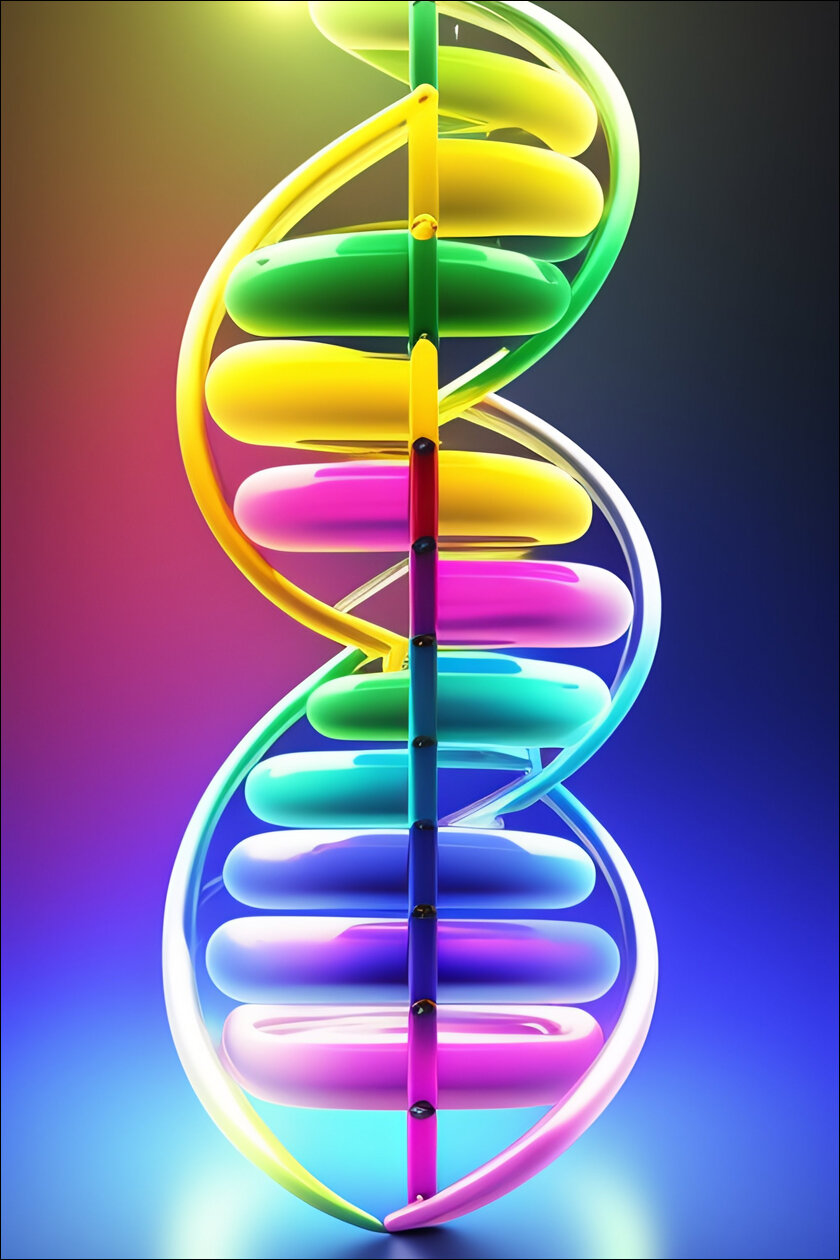
As this example highlights, anything whose input can be controlled can be turned into a computer. For decades scientists have been trying to use DNA as the basis for computers with reasonable success. However, a group of scientists at the Shanghai Jiao Tong University in China set out to make circuits like that of a computer with DNA molecules acting as wires which are instructed to configure in certain ways. They found that this liquid computer has the potential to use strands of DNA to run over 100 billion different circuits. This discovery has the potential to change many fields – computing, biology and medicine among others.
WHAT IS DNA-BASED COMPUTING:
As the name suggests, it’s an unconventional branch of science that uses other fields like DNA and biochemistry; uses molecular biology as hardware instead of metal and electronic one, to do computing. The field began in 1994 when Leonard Adleman of the University of Southern California demonstrated a proof-of-concept use of DNA as a form of computation to solve the seven-point Hamiltonian path problem (making a path through seven points without touching a point twice). In 1995 Eric Baum suggested the idea for DNA-based memory stating that since DNA has high density, it can be used to store vast amounts of data in a small space.
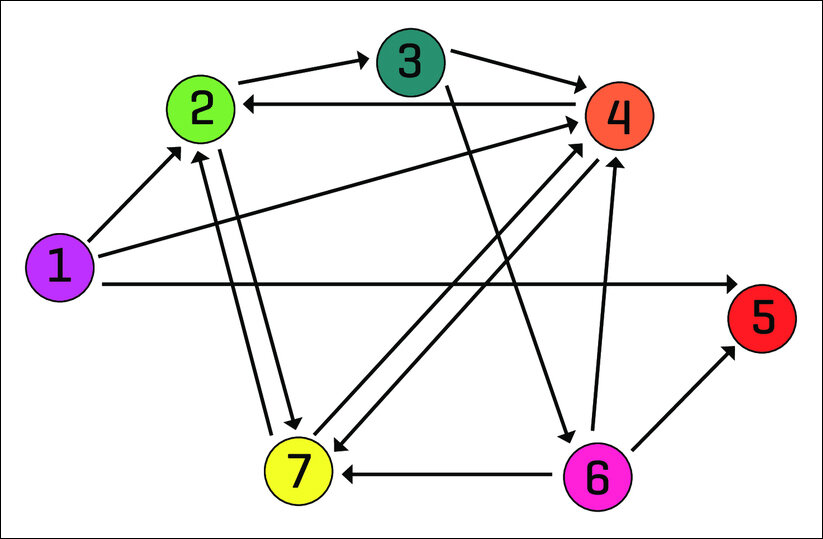
(Image Credit: Journal of Biological Engineering)
Ever since then, researchers across the world have been working on different ideas to use DNA for computing with this latest research being one of the strongest proofs of concept so far.
The fundamental difference between a normal computer and a DNA-based one is of material. While our computing devices like laptops or mobiles, use silicon microchips, DNA computers rely on carbon-based DNA for the same. In DNA computing, DNA strands are the input and output data that perform calculations. It is interesting to note that both silicon and carbon are in the same group in the periodic table and have similar properties. Scientists have long been trying to use silicon – far more abundant on earth than carbon – as a replacement for carbon, but have largely been unsuccessful.
The other benefit of DNA-based computing is storage. Considering that DNA can store up to one exabyte i.e. one billion gigabytes of data per cubic centimetre, its potential for data storage is immense. This storage is also surprisingly durable. Our current storage systems, be it magnetic tapes, hard disks, DVDs, Blu-Ray etc. do not have a long life span. Some don’t even last a decade. Compare this to DNA-based data storage which has a half-life of over 500 years.
This has caught the interest of tech companies. Take the case of Microsoft which established its research into DNA storage in 2015 as the Molecular Information Systems Lab and has devoted resources to this field. The reason could also be that the limits of silicon technology have been reached. We are at a stage in chip manufacturing where the limits of Moore’s law have been reached and we can’t make chips smaller still. Companies like Microsoft, hence, envisage a future where both computing and storage are hybrid systems of silicon and biochemical or carbon-based systems.
This is implicitly said by the Microsoft project that writes that it, “enables molecular-level data storage into DNA molecules by leveraging biotechnology advances in synthesizing, manipulating and sequencing DNA to develop archival storage. Microsoft and University of Washington researchers are collaborating to use DNA as a high-density, durable and easy-to-manipulate storage medium.”
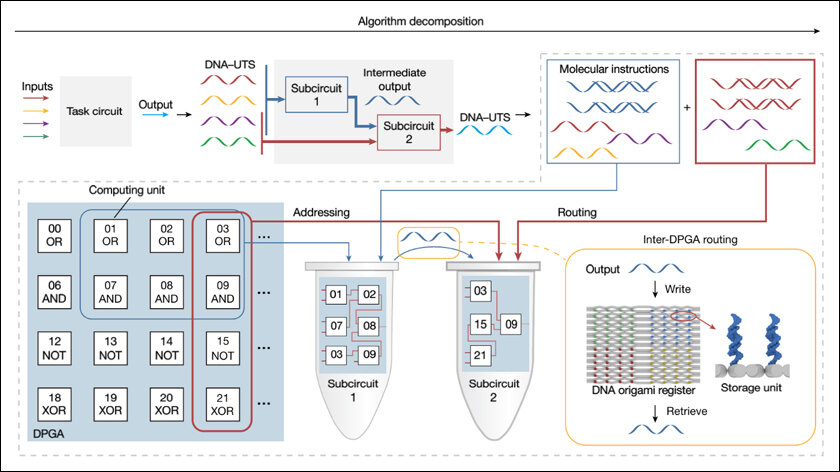
(Image Credit: Nature Journal)
Those interested in knowing further can check out this hour-long webinar by Microsoft researcher Karin Strauss where she explains how DNA provides an opportunity at the molecular level for ultra-dense, durable, and sustainable storage solutions for a world that needs more of them.
The other advantage of DNA computing is speed and reduced power consumption. Trillions of DNA molecules can fit into a drop of water, which means that DNA computing has the potential to do a large number of parallel computations while requiring little energy. Want proof, look at yourself. In terms of computing, a human brain is literally a supercomputer that uses just a fraction of energy than a corresponding supercomputer would require.
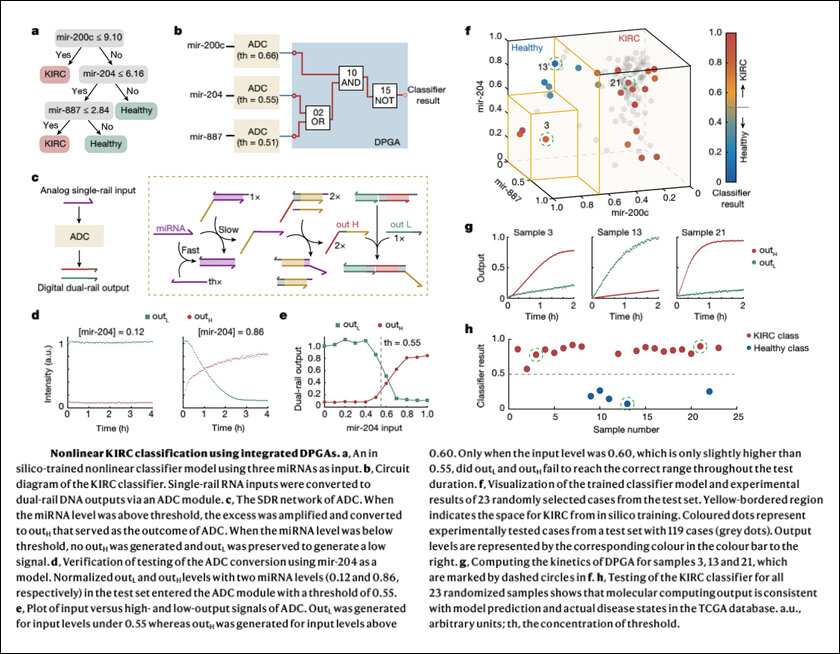
WHAT THE CHINESE RESEARCHERS FOUND:
The research led by Fei Wang and Chunhai Fan at the Shanghai Jiao Tong University, as put together by them in this research paper that is free to read for a while, demonstrated a way to build DNA integrated circuits or DICs that can be used for general computing. Thus, these DICs can be used for software programming and thus have proven to be capable of solving math problems.
They took inspiration from FPGAs or filed-programmable gate arrays, the basis of all computing devices and the example of whose creation using humans was shown by Cixin Liu in his novel. They created DNA-based programmable gate arrays or DPGAs using single-stranded DNA that worked like electrons or photons in integrated circuits. To demonstrate its applications, the scientists reconfigured and programmed multiple layers of DPGAs to create a DIC that can solve quadratic equations. They even demonstrated its ability to detect disease-associated biomarkers by correctly identifying all 23 samples tested in 2 hours.
This does not mean that a DNA-based computer will be out anytime soon, but this has been one of the clearest demonstrations so far that it is possible and that we might have it one day.
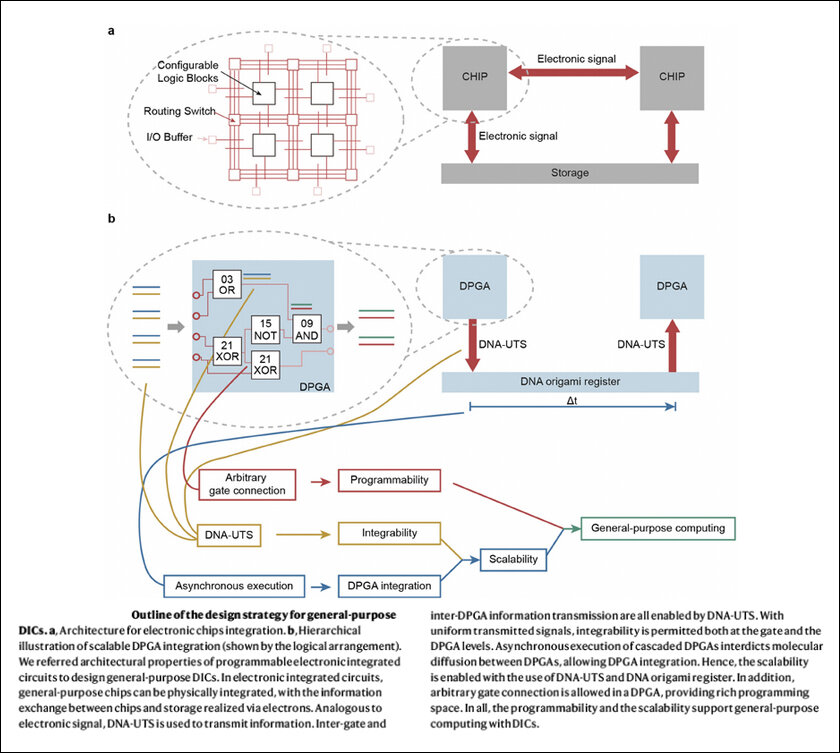
THE IDEA OF DNA:
DNA in itself is one of the most complex systems of information storage and propagation. Based upon the information stored in the form of DNA inside each living being like you and me, that being grows and sustains itself through life, interacts with the environment and the universe and eventually dies. To be able to turn that very basis of life into a computing system is a sort of advancement that could transform the world in ways that aren’t even possible to fathom. It will open up ways to change the world, and the universe, in ways that have yet to be thought.
So far, an immediate use of DNA computing is helping treat diseases. But that is just one part and the future could see the advent of living computers created in labs. This could be the basis for creating artificial life, as we can – in a sense – call every living thing a living computer because each living thing computes information about the world to sustain itself and survive. But instead of leaving it to chance, the ability to manipulate that system in different ways could open the doors to entirely unimaginable new things. That’s why what this research paper demonstrates is massive.
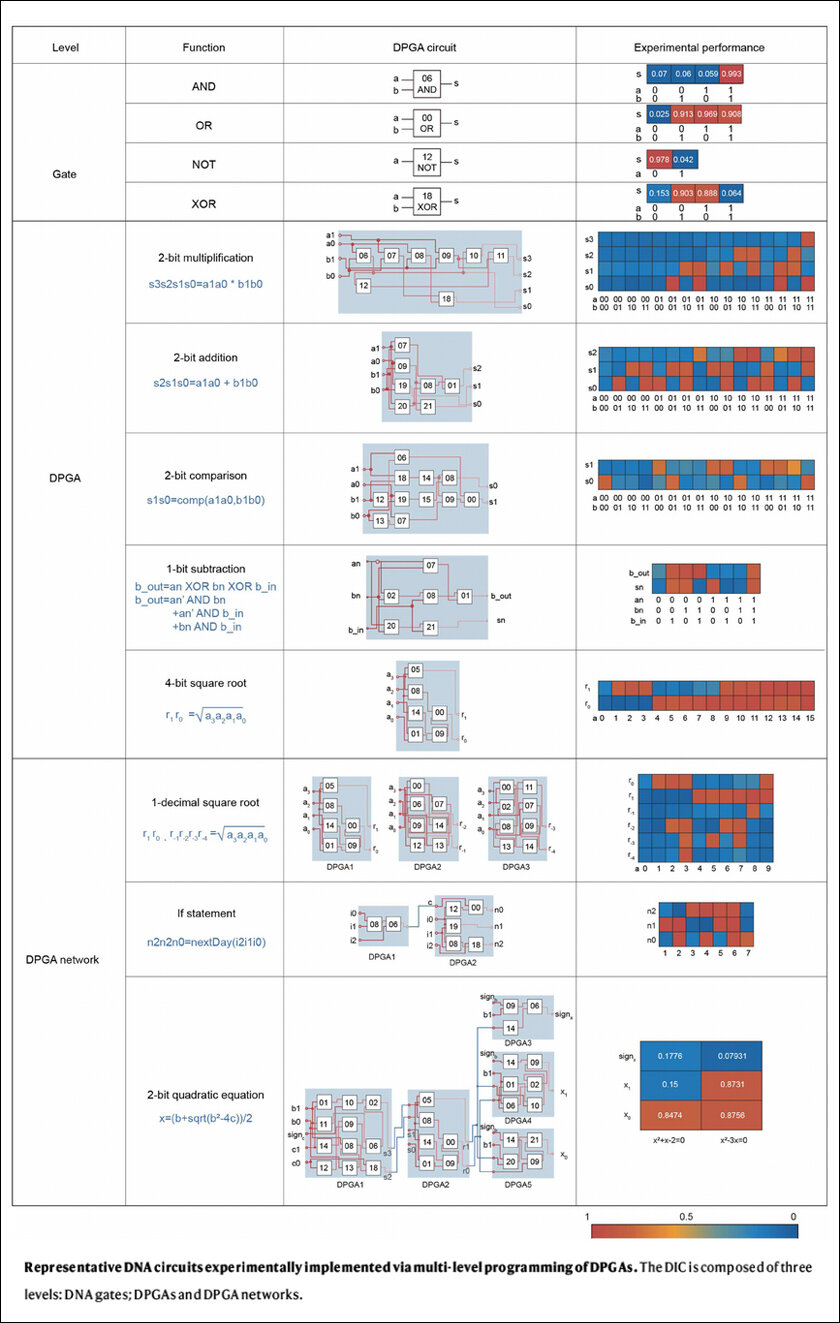
Human beings are quantum mechanical systems. Perhaps it won’t be wrong to also call humans quantum mechanical computing beings. Would quantum computing and DNA-based computing merge in certain ways in the future? Would it make it possible to manipulate living things in ways we can’t today?
The world of the future that science is opening up today, is impossible to imagine. Not just for us, but even for great sci-fi writers like Cixin Liu who imagined the end of the universe and time in his Three Body trilogy novels. If he’s following these rapid discoveries, one can be sure he won’t disagree.
In case you missed:
- Is Cloud Computing Headed for Rough Weather
- Microsoft’s Quantum Chip Majorana 1: Marketing Hype or Leap Forward?
- Google’s Willow Quantum Chip: Separating Reality from Hype
- Prizes for Research Using AI: Blasphemy or Nobel Academy’s Genius
- The Great Data Famine: How AI Ate the Internet (And What’s Next)
- Kodak Moment: How Apple, Amazon, Meta, Microsoft Missed the AI Boat, Playing Catch-Up
- Copy Of A Copy: Content Generated By AI, Threat To AI Itself
- Why a Quantum Internet Test Under New York Threatens to Change the World
- Reversing Heart Disease: Next Step in Living 150 Years Achieved in Lab
- AI Taken for Granted: Has the World Reached the Point of AI Fatigue?



